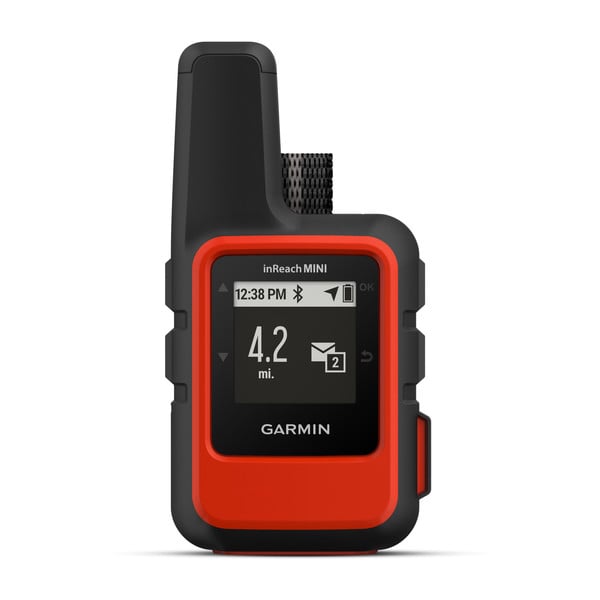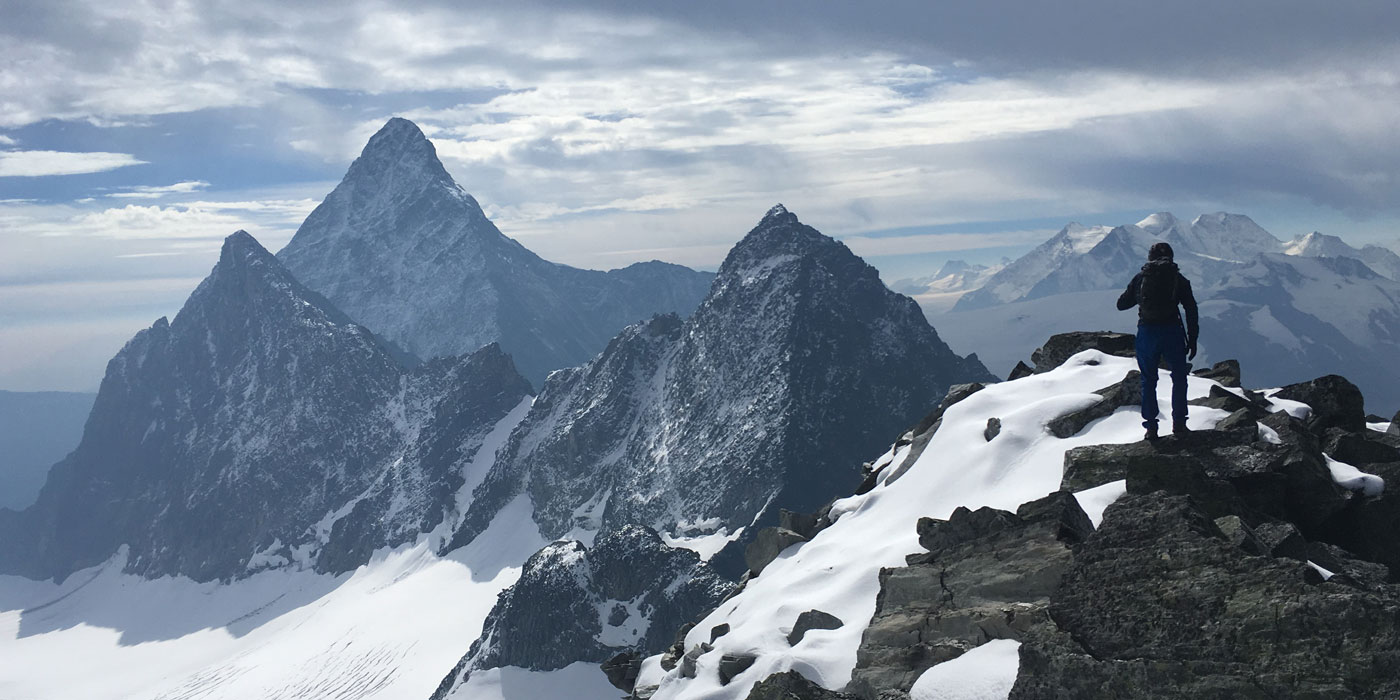
Runner Adam Campbell’s Incredible Fall and Rewarding Recovery
In 2016, Adam Campbell, one of the top mountain ultrarunners in the world, was seriously injured during a 200’ fall while attempting the Horseshoe Traverse in the Canadian Rockies. Campbell had an inReach® satellite communicator with him that day, and, following his rescue, he faced months of difficult recovery. Campbell’s return to sport was documented in the short film, “In Constant Motion.” In his own words, he shared with Garmin the details of that fall and the journey to regain his strength.
On Aug. 31, I left the Illecillewaet campground in Rogers Pass, British Columbia — the birthplace of Canadian mountaineering — with 2 friends in order to attempt the Horseshoe Traverse. The traverse is an aesthetic 35-mile crescent-shaped alpine route that involves linking 14 peaks along beautiful knife-edge ridges, with glacier crossings, and up to mid fifth class scrambling and climbing. It includes the world-famous northeast ridge of Mount Sir Donald, one of the classic 50 climbs in North America and notably solid quartzite rock. It’s most definitely not a trail run. In fact, only the first couple and last couple of miles are on trails. The rest involves significant but obvious (if you stick religiously to the ridges) route finding.
Having spent time climbing, hiking, running and skiing in the Pass, I had been drawn to the line the moment I heard about it. The line combined elements of technical mountaineering, terrain you could move through quickly and a stunning setting. I had been eyeing the weather for a few weeks, waiting for the perfect weather window to attempt this very ambitious project. From what I could tell, the full traverse is not often climbed, and the fastest time that I had seen for the route was approximately 3.5 days. Having looked at the profile, I thought it was possible to complete the traverse in 24 hours for a team moving light and fast. Fortunately, 2 of the best partners for a project of this nature, Nick and Dakota, were just as keen on the mission as I was. We found ourselves in central British Columbia at the end of the summer, with the weather forecast showing at least 72 hours of perfectly blue skies, which we figured would give us a great buffer if things went south. We were all psyched.
We met in the campground the night before and meticulously packed the gear that we believed we needed for the route. This included a handful of climbing cams and nuts to build rappel anchors if we had to, 2 30-meter lengths of lightweight ropes, glacier harnesses, locking carabiners and belay devices, slings, lightweight crampons, ice axes, helmets, a puffy jacket, a windbreaker, a pair of gloves, a buff, an inReach satellite communicator, a cellphone, headlamps, spare batteries, an emergency bivy sack, a map and a bit of food and water.
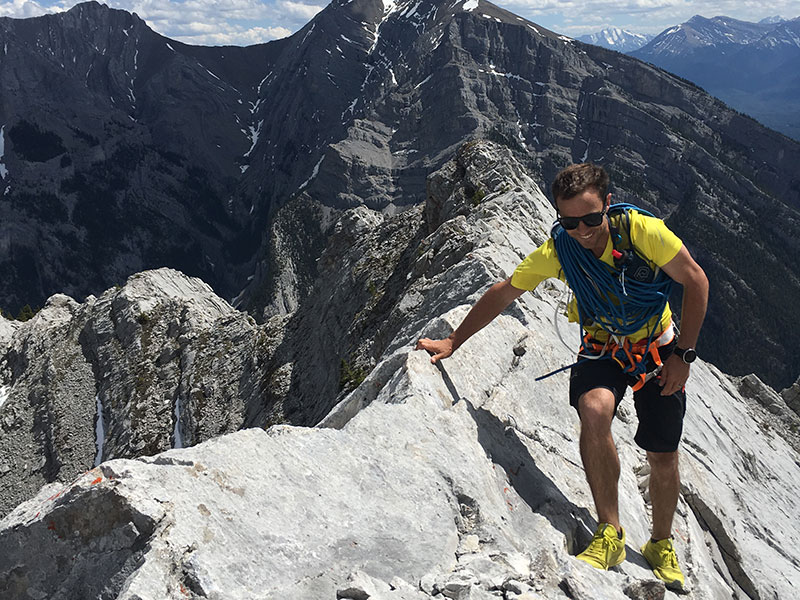
As the sun rose, we ran up to the first peak along a well-defined trail that switchbacks up through dense, almost claustrophobic, old growth forest. After about 40 minutes of climbing, we popped up into the alpine, left the trail and began to make our way up the blocky terrain to the start of the ridge. The day was sunny and warm, with only a mild breeze rustling through our hair as we could see our intended route stretch out across the skyline in front of us.
We began to make our way quickly across the peaks. I was envious of the ease with which Nick and Dakota could move through this technical terrain. People who grow up in the mountains — like Nick and Dakota — have a different level of comfort and efficiency of movement in the alpine. I was rushing to keep up, my deeply competitive nature worrying that I was holding them back. They would scramble ahead to a peak or a col between rock outcroppings and wait patiently for me to catch up to them. The views were stunning, and I kept reminding myself that we had a very long day ahead of us. We made our way over the first 4 peaks quite quickly, and I was starting to plan ahead for the daunting ridge of Sir Donald that was only a couple of peaks away.
Nick and Dakota scampered up a near vertical but blocky feature called the Eisenhower Tower. It resembles a Lego tower with geometric shapes protruding out, making for excellent fourth-class scrambling. Nick, being the most competent climber amongst us, was working his way up an obvious weakness in the feature with Dakota close behind him and me in tow.
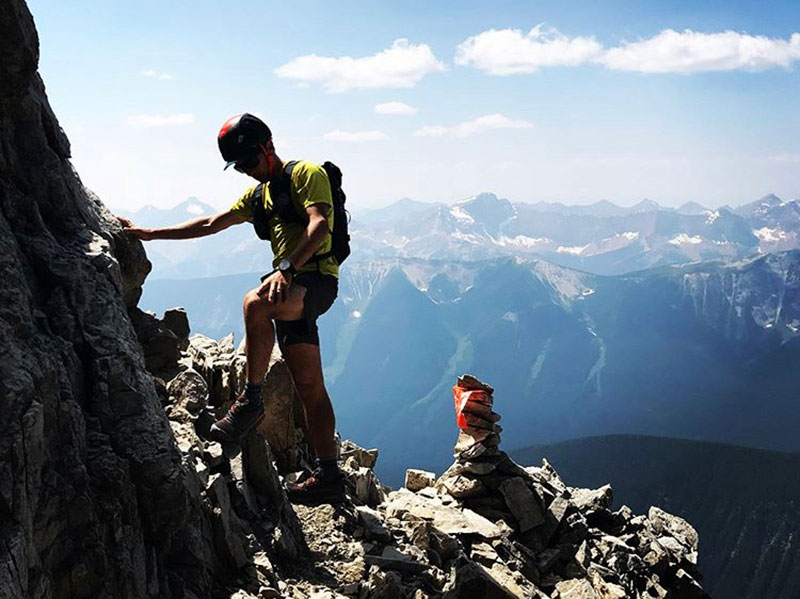
I was almost blindly trusting the route that he was choosing, not paying as much attention as I should, when I heard the most sickening sound any climber can imagine. I heard a loud crack and smelled an almost sulfurous smell as I felt a fridge-sized rock shift under my gentle grasp. The rock pulled loose onto me, and I instantly felt myself falling backward. I began tumbling and bouncing down a series of steep rocky ledges. I stayed conscious the whole time, and I remember a strange calm coming over me. There was a certainty and an inevitability that I was going to die, felt in that moment, and all I could do was accept it. But at the same time, there was an otherworldly sensation about the situation, almost as if it wasn’t happening to me. At one point I felt myself snag on a rock, or a ledge, which slowed my fall. It startled me out of my reverie, but almost instantly I began tumbling again. I still get vivid flashbacks of seeing the mountainous skyline flipped upside down and noting how strange it was that it was likely the last thing I would ever see. It still gives me shivers.
Time takes on a strange, very fluid feeling in moments of crisis. On the one hand, it slows down to a microscopic pace of almost hyperawareness. On the other, everything speeds up and happens in fast forward.
After tumbling and rag-dolling for an unknown length of time, I suddenly felt myself come to a stop. I was face down on a bed of sharp scree, and I realized that I wasn’t falling anymore. I saw blood on the rock in front of me, and I had a visceral dislike to seeing that. I pushed myself up and rolled myself onto my back. That action startled me and brought me back into my body. I couldn’t believe that I was alive, but I knew instinctively that I was in a lot of trouble and that I shouldn’t move. I began to do a self-assessment, starting at my feet. My ankle was in a lot of pain, my hip was clearly broken, my back was sore, and I was bleeding from my head. I wasn’t paralyzed, and I was conscious enough to be able to recognize how serious my predicament was. I had fallen over 200’ down a series of jagged rocks and ledges, and somehow, I had survived. My guardian angel lost a few wings that day, but she was looking out for me.
Nick and Dakota made their way gingerly down toward me. Having spoken to them since then, they were relieved to find me alive, conscious and not disfigured, each of which would have likely added to their trauma. They had seen me fall, and they were certain that they were coming down to a body. But with me alive, they both sprang into action. Nick ran up to the previous peak with my inReach and my cellphone to contact search and rescue, and Dakota stayed with me, keeping me calm and holding my hand. He took out my puffy jacket, wrapped me in a bivy sack, and we waited for rescue to arrive. Fortunately, Canada’s national parks have some of the most highly trained mountain search and rescuers in the world, and they happened to be doing a training mission in the vicinity of where I fell. Within less than 2 hours of my accident, they had long lined 2 rescuers down to me on the side of the mountain under helicopters. They secured me and heli-slung me out to a main road where an air ambulance crew was waiting for me. They stabilized me and flew me to the closest trauma center in Kamloops, British Columbia, about 250 miles away. That evening I was in surgery and was worked on for over 8 hours.
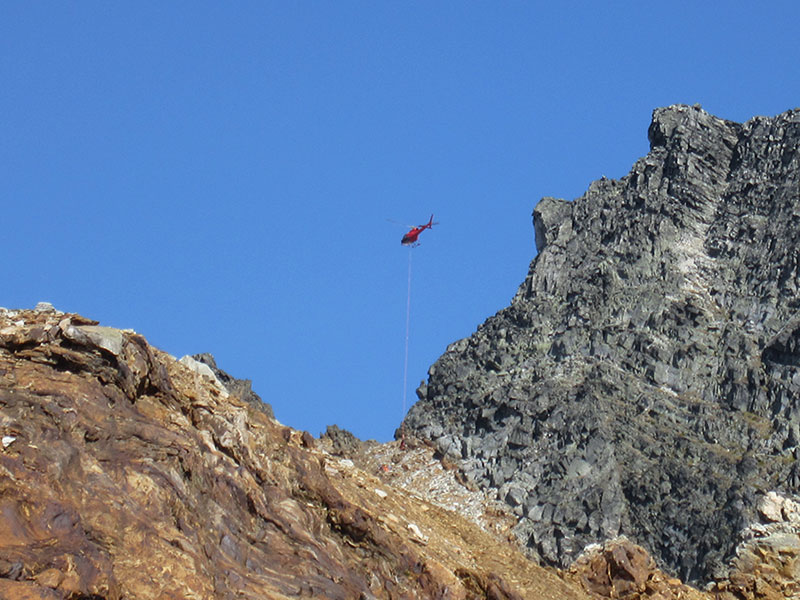
When I came to from my surgery, my then girlfriend, now wife, Laura, who had flown in from Calgary, Alberta, my mother, who had flown in from Victoria, British Columbia, and my girlfriend’s mom, who lives in Kamloops, were all there — and Nick and Dakota had both made their way from Rogers Pass to be with me. I asked in my dazed state what had happened. I found out that I had broken my T8–T11 vertebrae, and my back now had 2 metal rods in it. I had sheared off the top of my iliac crest bone, which was pinned back together. I had broken my ankle, and I had deep lacerations down to the bone around my waist. I had stitches across my body, including between every knuckle on both hands. I was a mess, but I was alive.
The surgeon told me that I was incredibly lucky and that I would likely make a full recovery. I didn’t know what a “full recovery” meant to him. Did it mean I could compete at the highest levels again, or did it mean that I wasn’t paralyzed and could walk again? I wasn’t entirely sure. I was relieved to be alive, but I was also incredibly scared about what had happened and what my recovery would look like. Even in my broken state, I knew that I was about to embark on a long, frustrating and painful process. What I hadn’t counted on was how ultimately rewarding it would all be.
A Painful and Emotional Recovery
Coming so close to death most certainly impacted me. In the first few weeks after my accident, it was a huge relief to be surrounded by so many loved ones through those initial days of fear and uncertainty. My brother, who lives in Thailand, flew back to be with me, and my father and stepmother, who live in Lagos, Nigeria, also flew out to be around me. I almost instantly felt the healing power of their support take hold. The simple act of having them touch me was incredibly comforting, and my hope increased again.
Unfortunately, my body responded poorly to the trauma of surgery and to the pain medications I was on, and my bowels stopped working. I developed a stomach ileus (obstruction), which was one of the most excruciatingly painful things I have experienced. I became grossly edematous (accumulation of an excessive fluids) as my whole body swelled to a shocking size. I couldn’t eat for almost 10 days as the doctors tried various treatments to stop the pain and release my bowels — essentially, my muscles were catabolizing under my fluid-filled skin. The pain stopped me from being able to sleep comfortably, so I began to keep a journal and began sketching. It was an incredible emotional outlet. I needed it because I had never felt so vulnerable. I was incapable of doing even the most basic of acts myself. I couldn’t control my paralyzed bowels and relied on the nursing staff and my family to clean my wounds and sheets. I’m someone who has always prided themselves on their physical competence and independence, and here I was, utterly dependent on both strangers and loved ones for the most basic of tasks. It required the utmost in humility.
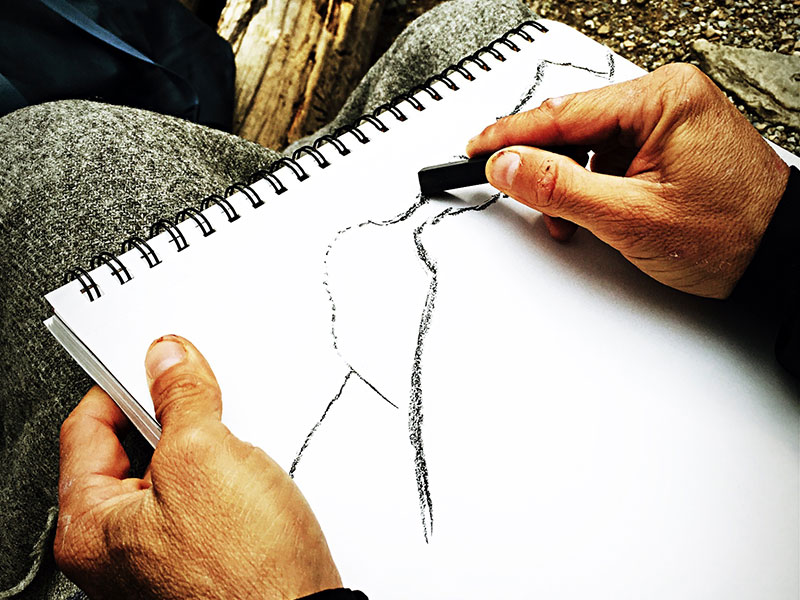
I had friends come and visit me, and they took me outside for the first time. They pushed me in my wheelchair — as every bump and crack sent shooting pain through my entire body — to a concrete courtyard with a few trees in it. I felt the cool breeze wrap its way through my blankets and across my skin, which sent shivers through my weakened body, but it also felt incredibly magical. The sun shining against my skin was so rejuvenating, and it once again gave me hope. I promptly fell asleep, again.
During this time, I began a very basic physio (physical therapy) program to relearn how to use my shattered body. I remember the first time the physio came into my room and told me that I would have to work on my endurance to be able to go to the bathroom. A few days before my accident, I would have counted myself amongst one of the top mountain ultrarunners in the world, and now I had to “work on my endurance” to make it the 3 or 4 steps to the bathroom, which I couldn’t use anyway. When I tried to stand for the first time, I collapsed almost right away into my walker. I began to cry. That simple act took so much effort. It exhausted me almost instantly, and the reality of my situation struck me violently. Again, I promptly fell asleep into a deep nap. When I woke up, I made a promise to myself. I knew that my recovery would be a challenge with many highs and lows, but much like in an ultra-endurance event, I knew that I had to break it up into smaller, manageable chunks and that I had to celebrate any victory in my recovery, no matter how small. I realized that I would have to continue to push myself, but I also had to accept my body’s natural process. Some days I would make progress, other days I may not, but each of those days were part of the natural cycle of getting stronger.
I also understood that I had to continue to feel and show my gratitude. I was lucky to be alive, and I was being helped in every way by an incredible support network. I wanted to show them and let them know how each of their acts, no matter how seemingly small, helped me. With the help of my friends, family and the incredible hospital staff, my first attempts to stand turned into a couple of wobbly steps, then a few more. After a couple of weeks, I walked around my ward 2 times, which was maybe 100 meters, and I began the process of learning how to walk up and down a set of steps. I fell asleep, exhausted after those 2 efforts.
But over time, I slowly began to regain strength. I spent a lot of time talking to friends, many of who are mountain guides or professional mountain athletes, about how to get back into the mountains. With their support, I was slowly able to work my way back into technical terrain. I also used that time to work on my more technical skills, doing lots of rope rescue, advanced avalanche training and crevasse rescue work. I want to have a long life of moving in the mountains, and the bigger my skill set, the safer I can be in them!
About 3 months after my accident, I got a call from Cam, a producer/director who went to my high school. He told me that he was an aspiring adventure filmmaker and asked if I might want to collaborate on a project. He was a few years younger than me, so I didn’t remember him. But I looked at a few of his clips, and I really liked his aesthetic. I agreed to let him tell my story, and I opened myself up fully to the process. I figured it would be a great way to share my journey and hopefully share some lessons so that others wouldn’t face the same issues.
He ended up telling my story with great care and attention, which was much appreciated. The film, “In Constant Motion,” turned out beautifully, and I still get moved watching it.
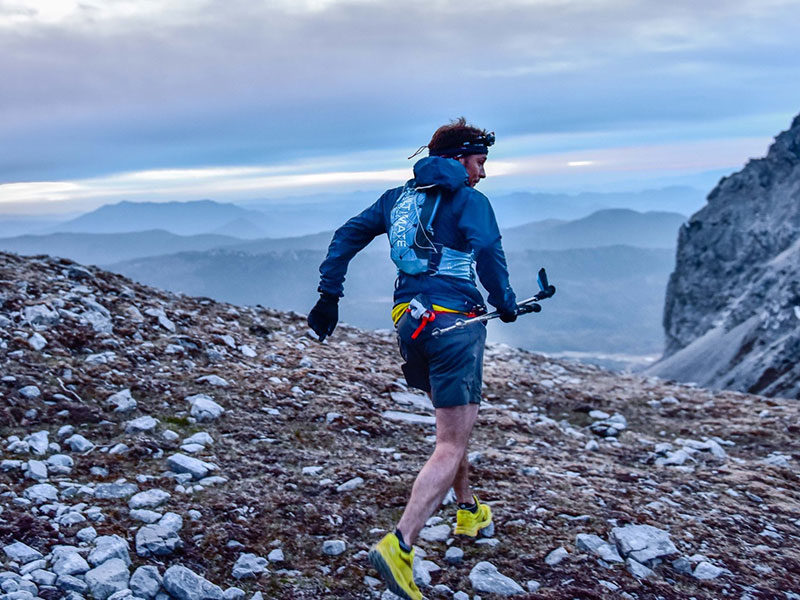
On the Trail Again
These days, I’m more or less where I was prior to the accident, but I’m not so motivated by external factors like competition. I’m more driven by pure adventure. I still race, but it’s mostly to push myself and see friends. My real passion comes from just being outside with close friends and trying to move efficiently — but safely — in wild places.
That said, it’s fun to really test your personal limits on occasion, too. There is a certain type of adventure that comes with exploring personal limits. I’m drawn to challenges that bring me right to the edge of what I’m capable of. That can be in climbing, skiing or running. I just love learning about myself and evolving as an athlete.
My current focus is mostly on big link-ups and fast mountaineering in the Canadian Rockies. I’m constantly dreaming about new projects and lines.
Read more about Adam Campbell on his website, or follow him on Instagram, Twitter or LinkedIn.
NOTICE: To access the Iridium satellite network for live tracking and messaging, including SOS capabilities, an active satellite subscription is required. Some jurisdictions regulate or prohibit the use of satellite communications devices. It is the responsibility of the user to know and follow all applicable laws in the jurisdictions where the device is intended to be used.
